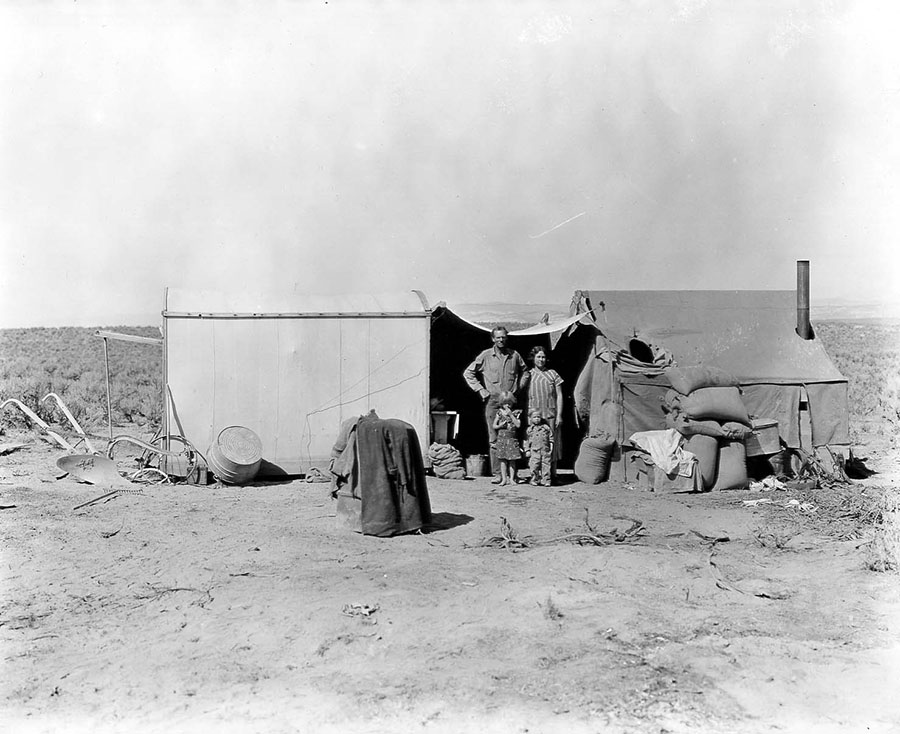- Reclamation
- Columbia-Pacific Northwest Region
- About Us
- Reclamation History
History
A Home of Their Own

In the early days of the last century, many Americans came West in search of a better life. Encouraged by the American government, settlers pushed the frontier further and further west, fulfilling what some saw as America's "manifest destiny." However, west of the 100th meridian, climate and topography required irrigation water for crop production, one of the requirements needed for settlers to "prove up" on their claims.
Developing irrigation storage and delivery systems was a complex and expensive business. Often private interests failed to successfully complete, operate, and maintain projects. In 1902, Congress passed the Reclamation Act, directing development of projects for irrigation water and other beneficial uses. In order to accomplish this, the federal government "withdrew" land from the public domain to construct irrigation projects and provide land for homesteaders to settle on.
Homesteaders came west to claim land as late as the early 1900s. The Homestead Act remained in effect until it was repealed in 1976, with provisions for homesteading in Alaska until 1986.
This 1936 photo shows a homestead family in their temporary camp on land in the Vale Project, Oregon. The family had arrived nine days earlier. Note they are ready to begin farming - you can see a plow and hand rake in left foreground of the photo.
The Vale Project, located in eastern Oregon, combined the use of public and private lands. The Vale-Owyhee Government Projects Land Settlement Association, organized in 1929, coordinated the settlement process. A local organization of farmers and businessmen residing on the Vale and Owyhee Project, the association desired to interest industrious settlers in locating on and developing unimproved lands on the project. The association published booklets to help accomplish their goals. At the close of 1940, the association reorganized and renamed itself the Malheur County Land Settlement Association.
Generally, armed forces veterans were given first chance at selecting land when the settlement tracts became available. Following that, lands were opened to applications from the general public. In all cases, applicants needed to meet certain eligibility criteria in order to qualify for receiving the land tracts.
Settlement on the Vale Project grew steadily because of the association's activity and the effectiveness of the irrigation system built by Bureau of Reclamation. Settlement grew as the canal and lateral system expanded. In 1930, there were 4,142 acres opened for entry and by 1940, the acreage available had grown to 24,340.
In 1949, operation and maintenance of the Vale Project was transferred from Reclamation to the Vale Oregon Irrigation District. The irrigation district assumed responsibility for the Agency Valley Dam and Beulah Reservoir in January 1955 and the Bully Creek facilities in January 1965.
The Vale Project is located in eastern Oregon and furnishes water to 35,000 acres of land.

